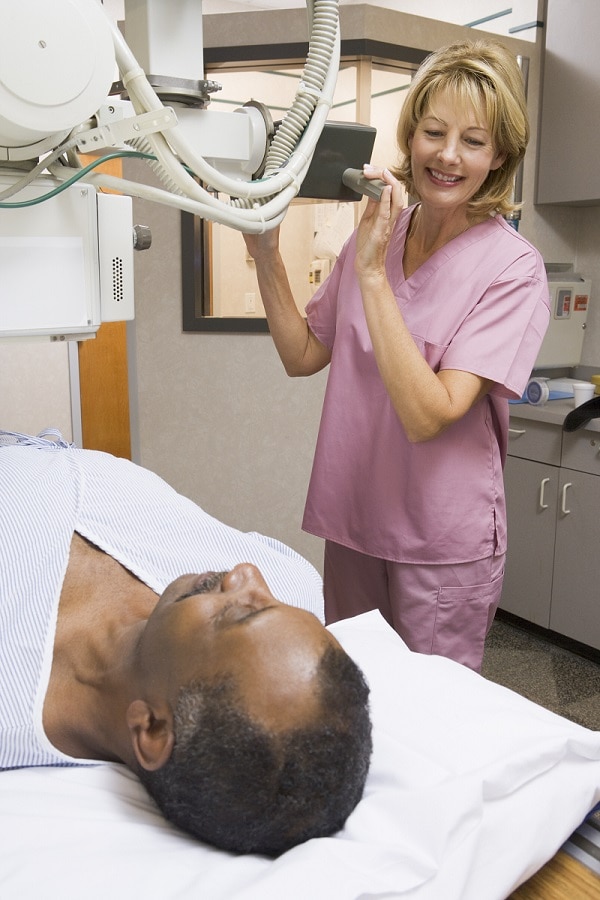Abdominal Adhesions
On this page:
- What are abdominal adhesions?
- How common are abdominal adhesions?
- Who is more likely to have abdominal adhesions?
- What are the complications of abdominal adhesions?
- What are the symptoms of abdominal adhesions?
- What causes abdominal adhesions?
- How do doctors diagnose abdominal adhesions?
- How do doctors treat abdominal adhesions?
- Can abdominal adhesions be prevented?
- Clinical Trials for Abdominal Adhesions
What are abdominal adhesions?
Abdominal adhesions are bands of scar-like tissue that form inside your abdomen. The bands form between two or more organs or between organs and the abdominal wall.
Normally, the surfaces of organs and your abdominal wall do not stick together when you move. However, abdominal adhesions may cause these surfaces to become adherent, or stick together.
Abdominal adhesions can kink, twist, pull, or compress the intestines and other organs in the abdomen, causing symptoms and complications, such as intestinal obstruction or blockage.
How common are abdominal adhesions?
Abdominal adhesions are common and often develop after abdominal surgery. In abdominal surgery, surgeons enter a patient’s abdomen through an incision, or cut. Abdominal surgery may be laparoscopic or open.
In laparoscopic surgery, which is increasingly common, surgeons make small cuts in the abdomen and insert special tools to view, remove, or repair organs and tissues. In open surgery, surgeons make a larger cut to open the abdomen.
Abdominal adhesions develop in more than 9 out of every 10 people who have surgery that opens the abdomen.1,2,3 However, a majority of people with abdominal adhesions do not develop symptoms or complications.1 Abdominal adhesions are less common after laparoscopic surgery than after open surgery.3
Who is more likely to have abdominal adhesions?
People who have had abdominal surgery are more likely to have abdominal adhesions. Among people who have had abdominal surgery, adhesions and related complications are more common in people who4
- had emergency abdominal surgery
- had pelvic surgery or surgery that involved the lower digestive tract, including the colon and rectum
What are the complications of abdominal adhesions?
Abdominal adhesions can cause intestinal obstruction and female infertility.
Intestinal obstruction
Intestinal obstruction is the partial or complete blockage of the movement of food, fluids, air, or stool through the intestines. Abdominal adhesions are the most common cause of obstruction of the small intestine.5 Intestinal obstruction may lead to
- lack of blood flow to the blocked part of the intestine and death of the blood-starved intestinal tissues
- peritonitis, an infection of the lining of the abdominal cavity
Intestinal obstruction can be life-threatening. People with symptoms of a complete blockage—which include abdominal pain and passing no fluids, stool, or gas—should seek medical attention right away.
Female infertility
In women, abdominal adhesions in the pelvis or inside the uterus can compress or block parts of the reproductive system and cause infertility.
What are the symptoms of abdominal adhesions?
In many cases, abdominal adhesions do not cause symptoms. If they do cause symptoms, chronic abdominal pain is the most common symptom.
Abdominal adhesions may cause intestinal obstruction, which can be life-threatening. If you have symptoms of intestinal obstruction, seek medical help right away.
Symptoms of intestinal obstruction may include
- abdominal pain
- bloating
- constipation
- not passing gas
- nausea
- vomiting
If intestinal obstruction cuts off the blood flow to the blocked part of the intestines or leads to peritonitis, you may develop additional symptoms such a fast heart rate or fever.
What causes abdominal adhesions?
Abdominal surgery is the most common cause of abdominal adhesions. Adhesions caused by surgery are more likely to cause symptoms and complications than adhesions related to other causes. Symptoms and complications may start any time after surgery, even many years later.3
Conditions that involve inflammation or infection in the abdomen may also cause adhesions. These conditions include Crohn’s disease, diverticular disease, endometriosis, pelvic inflammatory disease, and peritonitis.
Other causes of abdominal adhesions include long-term peritoneal dialysis to treat kidney failure and radiation therapy to treat cancer.
In some cases, abdominal adhesions are present at birth.
 Abdominal surgery is the most common cause of abdominal adhesions.
Abdominal surgery is the most common cause of abdominal adhesions.
How do doctors diagnose abdominal adhesions?
Doctors use medical history, physical exam, blood tests, imaging tests, and, in some cases, surgery to diagnose abdominal adhesions.
Medical history
A doctor will ask about your symptoms and your medical history, including your history of abdominal surgery or other conditions that may cause abdominal adhesions. A doctor will also ask about your history of other diseases and disorders that may cause symptoms similar to those of abdominal adhesions.
Physical exam
During a physical exam, the doctor may tap on your abdomen to check for tenderness or pain and use a stethoscope to listen to sounds in your abdomen.
Blood tests
A health care professional will take blood samples and send the samples to a lab. Although blood tests can’t be used to diagnose abdominal adhesions, doctors may order blood tests to rule out other health problems that could be causing your symptoms. If you have signs of an intestinal obstruction, blood tests can help doctors find out how severe the obstruction is.
Imaging tests
Imaging tests most often cannot show abdominal adhesions. However, doctors can use imaging tests to diagnose intestinal obstruction caused by abdominal adhesions. Doctors may also use imaging tests to rule out other problems that may be causing your symptoms.
Imaging tests may include
- computerized tomography (CT), which uses a combination of x-rays and computer technology to create images. A CT scan may help doctors diagnose intestinal obstruction and find the location, cause, and severity of the obstruction.
- x-rays, which use a small amount of radiation to create pictures of the inside of the body.
- x-rays with water-soluble contrast medium, a special liquid that makes the digestive tract more visible on x-rays. If adhesions are causing an intestinal obstruction, this imaging test can help doctors find out if you need surgery. The water-soluble contrast medium may also help relieve the obstruction.
- lower GI series, which uses x-rays to view your large intestine.
 Doctors can use imaging tests to diagnose intestinal obstruction caused by abdominal adhesions or rule out other problems.
Doctors can use imaging tests to diagnose intestinal obstruction caused by abdominal adhesions or rule out other problems.
Surgery
In some cases, doctors may recommend surgery to look inside the abdomen and check for adhesions or other problems that may be causing symptoms. Surgeons may check for abdominal adhesions with laparoscopic or open surgery.
In some cases, surgeons may be able to treat the problem during the procedure.
How do doctors treat abdominal adhesions?
If abdominal adhesions don’t cause symptoms or complications, they typically don’t need treatment.
If abdominal adhesions cause symptoms or complications, doctors can release the adhesions with laparoscopic or open surgery. However, surgery to treat adhesions may cause new adhesions to form. If you have abdominal adhesions, talk with your doctor about the possible benefits and risks of surgery.
If abdominal adhesions cause an intestinal obstruction, you will need treatment at a hospital right away. Doctors will examine you and may order tests to find out if you need emergency surgery. If you do, surgeons will release the adhesions, relieving the intestinal obstruction.
If you don’t need emergency surgery, doctors may try to treat the obstruction without surgery. Health care professionals will give you intravenous (IV) fluids and insert a tube through your nose and into your stomach to remove the contents of your digestive tract above the obstruction. In some cases, the obstruction may go away. If the obstruction does not go away, surgeons will perform surgery to release the adhesions, relieving the intestinal obstruction.
Can abdominal adhesions be prevented?
When performing abdominal surgery, surgeons take steps to lower the chance that patients will develop abdominal adhesions and related complications after surgery. For example, surgeons may
- recommend laparoscopic surgery, if possible, instead of open surgery.
- handle tissues gently to prevent damage.
- take steps to keep foreign materials out of the abdomen, such as using powder-free gloves and lint-free tools.
- cover damaged tissues inside the abdomen with a special film-like barrier at the end of surgery. The barrier keeps tissues separated while they heal, and then the barrier is absorbed by the body.
Clinical Trials for Abdominal Adhesions
The National Institute of Diabetes and Digestive and Kidney Diseases (NIDDK) and other components of the National Institutes of Health (NIH) conduct and support research into many diseases and conditions, including digestive disorders.
What are clinical trials for abdominal adhesions?
Clinical trials—and other types of clinical studies—are part of medical research and involve people like you. When you volunteer to take part in a clinical study, you help doctors and researchers learn more about disease and improve health care for people in the future.
Researchers are studying many aspects of abdominal adhesions, such as improving diagnosis and treatment of adhesions.
Find out if clinical studies are right for you.
What clinical studies for abdominal adhesions are looking for participants?
You can find clinical studies on abdominal adhesions at ClinicalTrials.gov. In addition to searching for federally funded studies, you can expand or narrow your search to include clinical studies from industry, universities, and individuals; however, the NIH does not review these studies and cannot ensure they are safe. Always talk with your health care provider before you participate in a clinical study.
References
This content is provided as a service of the National Institute of Diabetes and Digestive and Kidney Diseases
(NIDDK), part of the National Institutes of Health. NIDDK translates and disseminates research findings to increase knowledge and understanding about health and disease among patients, health professionals, and the public. Content produced by NIDDK is carefully reviewed by NIDDK scientists and other experts.
The NIDDK would like to thank:
Patricia L. Roberts, M.D., Lahey Hospital and Medical Center, Burlington, Massachusetts

